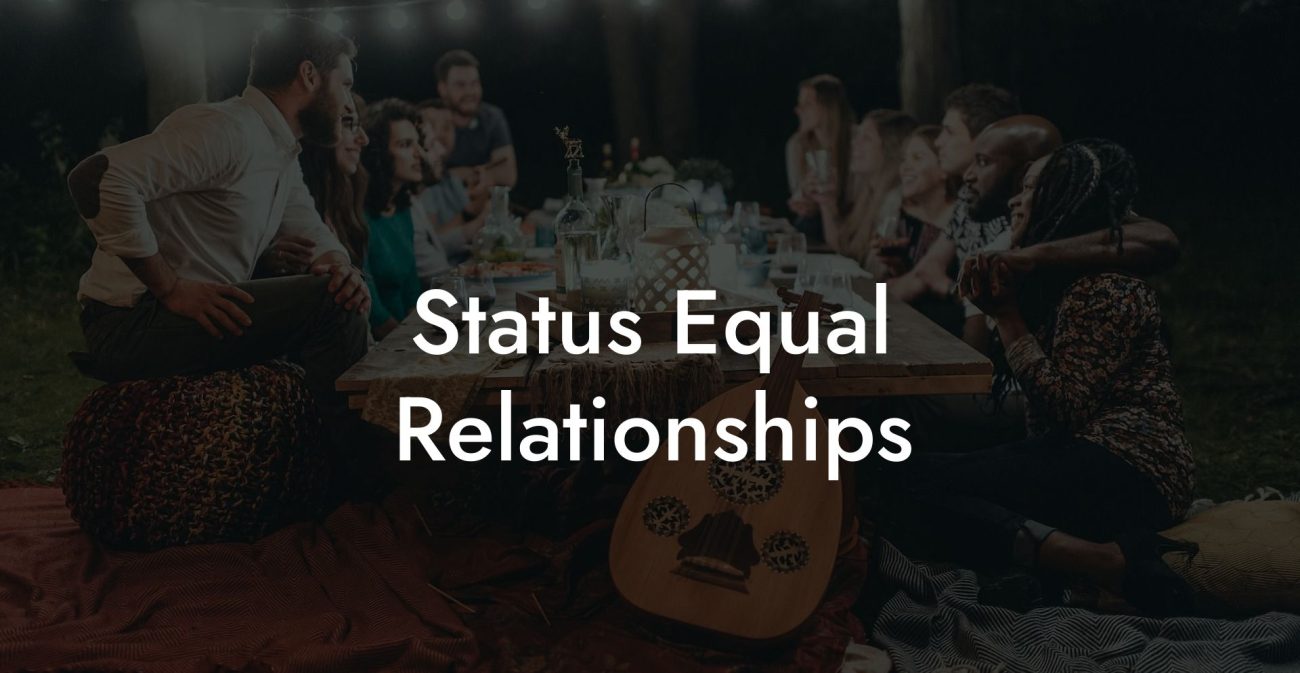Polygamy: Definition & Meaning

In today’s diverse world of intimate relationships and family structures, the concept of polygamy challenges conventional norms and expands our understanding of marriage. This article will explore what polygamy is, its historical roots and cultural significance, as well as the legal, ethical, and psychological aspects associated with this alternative marital model. Whether you are a student, researcher, or simply curious about alternative relationship structures, this guide offers in-depth insights and practical perspectives to help you navigate the complex world of polygamy.
Quick Links to Useful Sections
- Definition and Etymology
- What Is Polygamy?
- Historical Context and Cultural Significance
- Historical Roots of Polygamy
- Cultural Significance Today
- Legal and Ethical Considerations
- Legal Recognition and Challenges
- Ethical Considerations
- Psychological and Emotional Dynamics
- Emotional Complexity and Benefits
- Psychological Benefits and Challenges
- Comparing Polygamous and Monogamous Marriages
- Structural Differences
- Legal and Social Recognition
- Emotional and Psychological Dynamics
- Benefits and Challenges of Polygamous Marriages
- Benefits
- Challenges
- Practical Strategies for Thriving in a Polygamous Marriage
- Enhance Communication
- Establish Clear Boundaries
- Prioritize Self-Care and Personal Growth
- Build a Supportive Community
- FAQ: Your Polygamous Relationship: Definition & Meaning Questions Answered
Definition and Etymology
What Is Polygamy?
Polygamy is the practice of having more than one spouse at the same time. It is a form of non-monogamy that contrasts with the conventional, monogamous model of marriage. Polygamy can take various forms, the most common being:
- Polygyny: A marriage in which one man has multiple wives.
- Polyandry: A marriage in which one woman has multiple husbands.
The term "polygamy" is derived from the Greek prefix “poly-,” meaning "many," and the Greek word “gamos,” meaning "marriage." Thus, it literally translates to "many marriages." When referring to a relationship or a marriage as polygamous, we mean that it involves simultaneous marital bonds beyond the traditional one-to-one union.
Historical Context and Cultural Significance
Historical Roots of Polygamy
Polygamy has been practiced in many cultures throughout human history. In numerous ancient societies, plural marriage was a pragmatic solution to various economic, social, and environmental challenges. For example, in agrarian communities, polygyny allowed a man to increase his workforce, thereby boosting productivity and consolidating wealth. Similarly, in societies with scarce resources, such as parts of Tibet, Nepal, and India, polyandry (especially fraternal polyandry, where a woman marries two or more brothers) was practiced to prevent the fragmentation of family property and ensure economic stability.
These practices were not merely economic strategies; they also served to strengthen family ties, promote social cohesion, and maintain cultural traditions. Over centuries, polygamy became deeply embedded in the social fabric of many regions, supported by religious texts, customary laws, and cultural narratives.
Cultural Significance Today
Today, cultural attitudes toward polygamy vary greatly across the globe. In many parts of Africa, the Middle East, and Asia, polygamy remains a socially accepted practice, integral to the community’s way of life and often viewed as a symbol of prosperity and social status. In these societies, plural marriage is seen as a practical means to manage resources, build extended family networks, and reinforce communal identity.
In contrast, many Western societies uphold monogamy as the legal and cultural norm. Here, polygamous practices are often met with legal restrictions and social stigma. However, scholarly Data Research and cultural debates continue to examine the benefits and challenges of polygamy, prompting ongoing discussions about the diversity of human relationships.
Legal and Ethical Considerations
Legal Recognition and Challenges
Most modern legal systems define marriage as a union between two people, which means that polygamous marriages are generally not recognized by the state. This lack of legal recognition leads to several challenges, including:
- Inheritance and Property Rights: Without legal recognition, the distribution of assets and inheritance can become complicated.
- Custody and Family Law: Issues related to child custody and spousal rights may arise since legal frameworks are designed to support monogamous unions.
- Spousal Benefits: Access to healthcare, tax advantages, and social security benefits is typically structured around monogamous marriage, leaving polygamous families without formal protections.
In regions where polygamy is culturally sanctioned, customary or religious laws may provide some level of recognition; however, these frameworks often exist in parallel with national legal standards and do not offer the same protections.
Ethical Considerations
Ethical polygamy is grounded in principles such as informed consent, mutual respect, and transparent communication. In an ideal polygamous marriage, every partner enters the relationship voluntarily and with a full understanding of its structure and expectations. Key ethical principles include:
- Informed Consent: All individuals involved must willingly agree to the relationship dynamics without coercion.
- Mutual Respect: Each partner’s needs, boundaries, and individuality should be acknowledged and honored.
- Transparency: Open communication is vital for addressing issues, renegotiating boundaries, and maintaining trust among all parties.
- Equity: Striving for fairness in decision-making and resource distribution is essential, especially in contexts where traditional practices have led to gender imbalances.
Psychological and Emotional Dynamics
Emotional Complexity and Benefits
Polygamous relationships can offer a rich tapestry of emotional support. With multiple spouses, individuals may receive diverse forms of care, companionship, and practical assistance, which can foster resilience and personal growth. The collaborative nature of these relationships can create a strong sense of community and shared purpose.
However, the emotional dynamics in polygamous marriages are inherently complex. Managing multiple intimate bonds may give rise to challenges such as jealousy, feelings of neglect, or competition for attention. Successfully navigating these issues requires high levels of emotional intelligence, effective conflict resolution skills, and ongoing dialogue among all partners.
Psychological Benefits and Challenges
Participants in polygamous marriages often report benefits such as:
- Diverse Sources of Support: Access to multiple perspectives and forms of care can enhance personal and collective well-being.
- Economic and Social Stability: Shared responsibilities and resource pooling can lead to increased financial security and a cohesive family unit.
- Personal Growth: The complexity of managing multiple relationships can promote self-awareness, improved communication skills, and greater resilience.
Conversely, the challenges may include:
- Managing Jealousy and Insecurity: Balancing the emotional needs of several spouses requires careful negotiation and empathy.
- Emotional Burnout: The demands of maintaining multiple relationships can sometimes lead to stress and fatigue.
- External Social Pressure: Facing legal restrictions and social stigma can impact the mental health and self-esteem of those involved.
Comparing Polygamous and Monogamous Marriages
Structural Differences
In monogamous marriages, the relationship is exclusive to two individuals, which simplifies decision-making, legal recognition, and daily logistics. Polygamous marriages, by contrast, involve multiple spouses, leading to a more complex network of emotional and practical responsibilities.
Legal and Social Recognition
Monogamous marriages are legally recognized and widely supported by cultural and religious institutions, offering clear benefits such as spousal rights and legal protections. Polygamous marriages, however, are not recognized by most modern legal systems and often face significant legal and social challenges.
Emotional and Psychological Dynamics
Monogamy typically fosters a deep, focused emotional bond between two people, while polygamy offers diverse emotional support through multiple connections. Although this diversity can be enriching, it also requires greater emotional management to address challenges like jealousy and imbalance.
Benefits and Challenges of Polygamous Marriages
Benefits
- Diverse Support Network: Multiple spouses can offer various forms of emotional, practical, and financial support.
- Economic Efficiency: Shared household responsibilities and resource pooling can lead to greater economic stability.
- Cultural Cohesion: In societies where polygamy is a tradition, plural marriages reinforce cultural identity and social solidarity.
- Collaborative Living: The division of labor and mutual support among spouses can create a nurturing and resilient family environment.
Challenges
- Legal Non-Recognition: Polygamous marriages are generally not acknowledged by state law, which can create complications in areas such as inheritance and custody.
- Emotional Complexity: Managing multiple intimate bonds requires advanced communication skills and can lead to challenges such as jealousy and feelings of inequality.
- Social Stigma: In societies that favor monogamy, polygamous marriages may face criticism and prejudice, affecting the well-being of the individuals involved.
- Power Imbalances: Historical practices of polygamy have sometimes resulted in unequal power dynamics, making it essential to actively work towards equity among all spouses.
Practical Strategies for Thriving in a Polygamous Marriage
Enhance Communication
Open, honest, and regular communication is the foundation of any successful relationship. In polygamous marriages, it is important to schedule regular family meetings or one-on-one check-ins with each spouse to discuss feelings, expectations, and any issues that arise.
- Practice active listening and use “I” statements to express personal needs without assigning blame.
- Utilize digital tools such as shared calendars and group chats to coordinate schedules and responsibilities.
Establish Clear Boundaries
Clear boundaries help prevent misunderstandings and ensure that all partners feel respected. Develop written or digital agreements that outline roles, responsibilities, and expectations, including:
- Financial responsibilities and asset distribution.
- Time allocations for shared and individual activities.
- Guidelines for emotional and physical intimacy.
- Protocols for conflict resolution and periodic review of the relationship structure.
Prioritize Self-Care and Personal Growth
Maintaining your own well-being is crucial. Establish a self-care routine that supports your physical, emotional, and mental health, such as:
- Engaging in regular exercise and mindfulness practices.
- Pursuing hobbies and activities that promote personal growth.
- Seeking professional counseling or therapy when needed to manage complex emotions.
Build a Supportive Community
Connecting with others who understand your relationship model can provide invaluable support. Consider joining online forums, social media groups, or local meet-ups focused on alternative family structures and ethical non-monogamy.
- Participate in online communities such as r/polyamory to share experiences and insights.
- Attend workshops and webinars to expand your knowledge of relationship dynamics.
- Engage with support networks that can offer guidance during challenging times.
FAQ: Your Polygamous Relationship: Definition & Meaning Questions Answered
1. What does "polygamous relationship" mean?
A polygamous relationship is a marital or committed arrangement in which an individual is simultaneously involved with more than one spouse.
2. How is polygamy defined?
Polygamy is defined as the practice of having multiple spouses at the same time. It includes forms such as polygyny (one man with multiple wives) and polyandry (one woman with multiple husbands), collectively referred to as plural marriage.
3. What are the historical roots of polygamous relationships?
Polygamous relationships have been practiced for thousands of years as practical solutions to economic, social, and environmental challenges. They have been integral to the social and cultural fabric of many societies, serving as a means to consolidate resources, strengthen family bonds, and maintain social stability.
4. What legal challenges do polygamous marriages face?
Most modern legal systems define marriage as a union between two people, so polygamous marriages are generally not legally recognized. This can create complications regarding inheritance, custody, and spousal benefits.
5. What ethical principles underpin ethical polygamy?
Ethical polygamy is based on informed consent, mutual respect, transparent communication, and equity among all parties. All individuals must voluntarily agree to the relationship and have their needs and boundaries respected.
6. Where can I find additional resources on polygamous relationships?
Additional resources include books such as "The Ethical Slut" by Dossie Easton & Janet Hardy and "More Than Two" by Franklin Veaux & Eve Rickert, podcasts like "Multiamory" and "Polyamory Weekly," and online communities such as r/polyamory.
Resources and Community Support: Your Next Steps
- "The Ethical Slut" by Dossie Easton & Janet Hardy – A seminal book exploring various models of consensual non-monogamy, including polygamous relationships.
- "More Than Two" by Franklin Veaux & Eve Rickert – An extensive guide providing practical advice on managing the dynamics of multiple relationships and understanding alternative marital arrangements.
- Podcasts: Listen to "Multiamory" and "Polyamory Weekly" for engaging discussions and personal stories about alternative family models.
- Online Communities: Join forums such as r/polyamory to share ideas and receive support.
- Workshops and Webinars: Attend events focused on relationship psychology and ethical non-monogamy to expand your knowledge and connect with like-minded individuals.
By exploring these resources and applying the practical strategies outlined in this guide, you can develop a clear, informed understanding of what a polygamous relationship entails and how it differs from conventional marital arrangements. Embrace continuous learning, open dialogue, and self-reflection as you explore the diverse landscape of alternative relationships.
Attachment Styles In Non Monogamous Relationships
Common Myths About Ethical Non Monogamy
Compersion And Shared Joy
Consent As The Foundation Of Non Monogamous Relationships
Core Values That Define Ethical Non Monogamy
Ethical Non Monogamy Across Different Cultures
Hierarchical Versus Non Hierarchical Models
How Ethical Non Monogamy Differs From Cheating
How Media Representation Shapes Public Perception
How To Choose A Structure That Fits
Jealousy As A Skill Building Opportunity
Managing Insecurity And Comparison
Monogamish Relationships
Open Relationships Explained
Parallel Versus Kitchen Table Dynamics
Polyamory And Multiple Loving Relationships
Psychology And Emotional Work
Relationship Anarchy Principles
Solo Polyamory And Autonomy
Swinging As A Social And Sexual Practice
The Difference Between Structure And Freedom
The History And Cultural Roots Of Ethical Non Monogamy
Types And Relationship Structures
What Ethical Non Monogamy Is And What It Is Not
Why People Choose Ethical Non Monogamy
Lost & confused by all of the terms, types and seemingly made up 3 letter acronyms?? We've got you. Check out our Ethnical Non-Monogamy Dictionary >>
Useful Interruption: Not sure which relationship vibe fits you best? Take our Relationship Test, it’ll give you the real insight into your natural relationship style. Then, dive into our binge-worthy guides (from the tried-and-true to the “wait, that’s a thing?”) and find the perfect relationship type for your life:
- Monogamy
- Open Relationships
- Ethical Non-Monogamy
- Solo Polyamory
- Non-Hierarchical Polyamory
- Hierarchical Polyamory
- Relationship Anarchy
- Swinging
Now back to the main article but yeah take the test...












